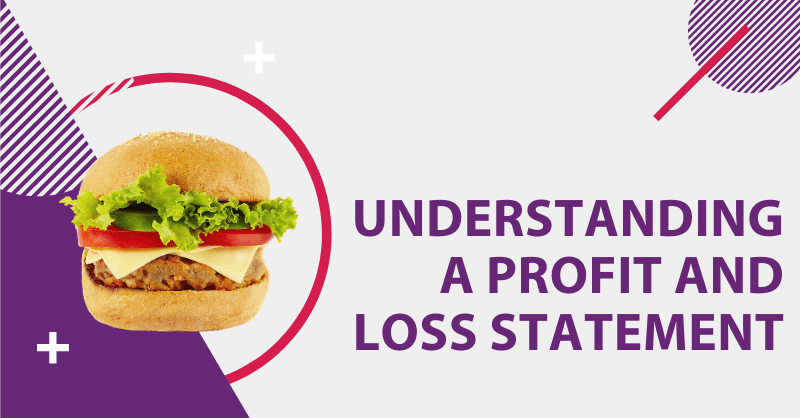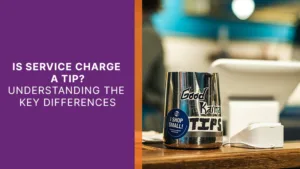Updated on: February 8, 2025
You can’t grow your restaurant if you don’t know where your restaurant’s finances stand. That’s why tracking your earnings and expenses is key. How do you do it? A restaurant income statement is also known as a restaurant profit and loss statement. A restaurant profit and loss statement can help you see where you’re making money and where you could stand to cut expenses to boost profit.
In this post, we’ll discuss the importance of a restaurant income statement, show you how to prepare a restaurant profit and loss statement, and review some of the main expenses you should track.
Is my restaurant profitable: the purpose of a restaurant profit and loss statement
A restaurant P&L statement—also known as a restaurant profit and loss statement or a restaurant profit and loss statement—is a document that details the money your restaurant makes and spends within a given period (usually one month). In its simplest form, a restaurant income statement shows sales with costs subtracted to determine net profit or loss. However, a robust statement shows a detailed breakdown of every line item. Restaurant owners need to analyze their profits and losses regularly to see how their business is doing, track growth, and make improvements. Ultimately, this statement is a good barometer of your restaurant’s financial health.
How do you prepare a restaurant income statement?
So how do you prepare a restaurant profit and loss statement? Restaurant reporting software can eliminate much of the grunt work in generating restaurant financial statements. Still, having a general idea of what to track is helpful. You’ll need to know the total income and expenses to chart profits and losses.
Income refers to the money you make in the restaurant and through catering and private events.
Expenses include everything from rent and insurance to payroll and inventory.
Once you have income and expenses, you’ll need to calculate profits. To find that number, subtract expenses from income.
What expenses does a restaurant have?
You can’t track expenses if you don’t know what they are. Hint: there are plenty. When calculating expenses, you need to consider more than rent and utilities. Also, consider inventory, payroll, and repairs. And have you thought about marketing expenses? What about the cost of technology and POS systems? You should factor in all of these when determining expenses.
What does a restaurant profit and loss statement include?
As the name implies, at the most basic level, a profit and loss statement shows you profits and losses. However, a restaurant income statement is a bit more complex than that. It contains:
- A breakdown of sales
- A breakdown of costs
- A breakdown of labor costs
- A breakdown of operating costs
- A statement of net profit or loss
Sales breakdown
How much total money came into your restaurant? To ensure your restaurant profit and loss statement accurately reflects your operations, be thorough and include every revenue channel, including catering, takeout, food trucks, private events, and dine-in sales.
A breakdown of the cost of goods sold
The costs of goods sold (COGS) is the total cost spent on the ingredients to make the menu items that became food and beverage sales. In other words, it’s the cost of food inventory used during a given time. Your inventory system should hold these numbers.
The cost of labor
How much did you pay servers, chefs, cashiers, and other employees? You’ll also need to factor this in. Many restaurants find that optimizing the number of workers on staff at any given time is a great way to boost profits. Keep a close eye on your labor costs.
Operational costs
This is what it costs to “keep the lights on.” Operating costs include utilities, repairs, marketing, cleaning supplies, and even rent, taxes, and waste removal.
Net profit and loss
The last section of the restaurant profit and loss statement is the net profit and loss section. This is why an income statement is often called a profit and loss statement. What you want to know is if you gained or lost money each month, and that’s what this section is all about. You’ll need to adjust if you’re spending more than you’re making. And even if you post a positive profit, there’s always room for improvement.
Calculate your net profit or loss by starting with the gross profit. Subtract your restaurant labor costs and operating expenses from the gross profit. This will help you understand your profit margins and where to make adjustments.
What is an example of a restaurant profit and loss statement?
An example profit and loss statement would contain the elements below. While the table is a generalized view, it gives a concise breakdown.
A detailed restaurant profit and loss statement would include an itemized list for most of the sections below. For instance, sales would be itemized and categorized into food, beverage, merchandise, catering, and any other areas your restaurant sees fit to track for revenue. The same would follow for labor costs and operating expenses. Many restaurants find it helpful to calculate these daily and weekly and then sum everything up monthly. Every business in every industry regularly generates a P&L statement. Restaurant expenses can be even more finicky because so many of your inputs are perishable food items. Don’t hesitate to generate a restaurant profit and loss statement even more regularly than every month.
The table below is strictly theoretical. Profits will vary depending on the industry, area, local expenses, etc.
| Monthly sales | $45,000 |
| Monthly COGS | $15,000 |
| Labor costs | $12,000 |
| Operating expenses | $4,000 |
| Net profit or loss | $14,000 profit |
Congratulations! You’ve generated a restaurant profit and loss statement!
As you can see above, we took total sales ($45,000) and subtracted the sum of total expenses ($31,000) to determine the net-net profit.
Sales, costs of labor, and goods: where do I find all of this data?
In the past, many businesses kept hard copies of financial transactions, such as receipts, invoices, and time cards. Storing these paper documents took up a lot of space and required time to sort through them and manually enter data.
We can help you streamline this process. Our software lets you digitally capture all of this relevant data and safely store it for quick and easy retrieval when generating reports.
What is the easiest way to generate a profit and loss statement?
Restaurant managers and owners can try to track restaurant sales and expenses by hand or do it the easy way. The easy way is to upgrade to the right software to get on with your day. For a restaurant, profit, and loss can hinge on a dozen little things that might go overlooked without the regular generation of restaurant profit and loss statements and other reports. We’re here to help. Reach out if you’re ready to track your profits and losses without all the messy paperwork. Let’s work together to improve your restaurant’s financial performance.
Frequently asked questions about restaurant profit and loss statements
How do you write a good profit and loss statement?
The key is data! You need lots of timely, relevant, and accurate data. In addition to helping you analyze data, we can help you capture and safely store it in digital form, so generating reports is quick and easy.
How do you write a profit and loss statement?
To be succinct, subtract the sum of your expenses and liabilities from the sum of your profits and other assets over a specific period. Profit and loss statements are pretty simple documents; they include a lot of information and details that can make them seem more intimidating than they are. Our software can take the complications and challenges out of this process.






